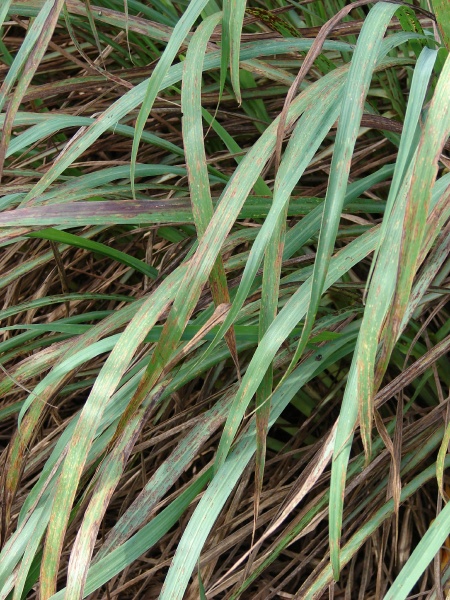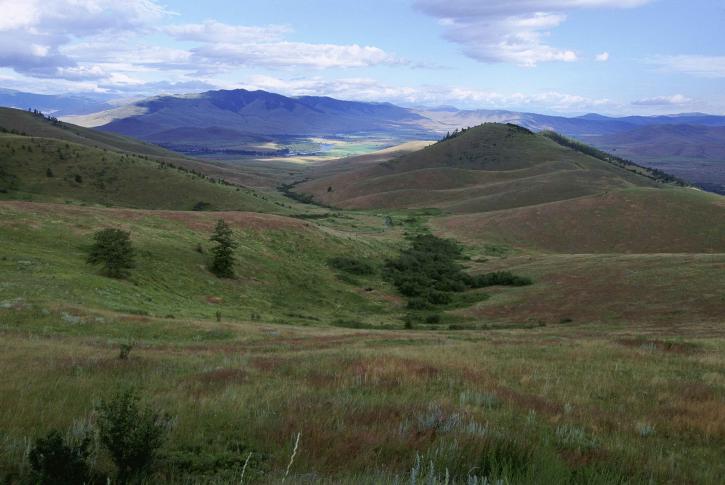
Habitat
Cymbopogon citratus is a perennial, or enduring, graminoid. The tropical shrub can be traced back to an origin in Indochina, Malaysia, and Sri Lanka.
Like most plants, Cymbopogon citratus needs sunlight, water and
soil, but what is unique about this plant is that it has aggressive
growth that can thrive in multiple soil types(See
Nutrition why the plant needs these
three sources!). It grows in
clusters in the summer time as well as the spring time but is very
sensitive to the cold. The roots are killed often during extreme
freeze ups, and the leaves are also susceptible to frost damage.
Because of the aversion to frost and freezing, lemongrass is confined to a niche that typically remains hot and sunny, with scattered rainfall. Mainly, tropical grasslands. Within these grasslands, lemongrass likes to grow amongst the other grass species and the sparse trees so that it may be exposed to the sunlight and rainfall as much as possible. Living in clusters, among other grasses puts it at less risk of being consumed by the grazing animals in the area. The Noni, another organism also loves the heat!
Organisms that inhabit tropical grasslands alongside Cymbopogon citratus include extensive varieties of carnivores, omnivores, and herbivores. Specifically, in Sri Lanka, the Golden Jackal preys on the Chital deer in many of the grasslands. Insects, like the grasshoppers, lady beetles stink bugs, and many more, are the largest consumers of the plants in the grasslands. After droughts, the grasshoppers are so abundant they form swarms called locust. Although this is rare, these locusts can engulf and kill every plant it comes in contact with. (grasshoppers like this one!)Preying on theses organisms are species of snakes, rodents, and another large group, the birds. Because of the heat keeping to them flying paired with the open, vastness, and clearness of the grasslands allowing easy hunting, bird species make up a large population here as well.
The animals who inhabit the tropical grasslands alongside Cymbopogon citratus have and influence on the population. Being the primary producers, herbivores are a large danger to this organism. Carnivores pose less of a threat to the plant, but still may damage it by uprooting the plant; although they a beneficial in that they feed on the herbivores that ingest them which both eliminates them, and keeps them away.
Some of the herbivorous deer you would find are similar to this white tailed deer.
You would also find snakes like this one, the Bamboo Pit Viper, although they may not be the same species, they are equally as scary!
Within this habitat, lemongrass must overcome competition as well
as predation. Because they grow in clusters, the plants are not only
in competition with the other autotrophic species, but even between
themselves. Each leaf is c ompeting for sunlight and because of
phototropism, each plant is growing in a curve towards their primary
nutrient source, the light. This poses the obvious risk of shading
other leaves, and the plant must work to over come it. Cymbopogon
citratus also experiences competition underground. The
adaptation of fibrous roots proves beneficial in nutrient uptake and
storage, however, these roots spread out amongst themselves creating
a struggle for nutrients underground. See
adaptations for more details on the
roots.
ompeting for sunlight and because of
phototropism, each plant is growing in a curve towards their primary
nutrient source, the light. This poses the obvious risk of shading
other leaves, and the plant must work to over come it. Cymbopogon
citratus also experiences competition underground. The
adaptation of fibrous roots proves beneficial in nutrient uptake and
storage, however, these roots spread out amongst themselves creating
a struggle for nutrients underground. See
adaptations for more details on the
roots.
The Journal of Herbs, Spices & Medicinal Plants published an experiment on Cymbopogon citratus to determine the effect of "three within-row plant spacing." The conductors tested plant growth and quality at different spacing, and concluded that the overall survival rate was higher with the wider plant spacing compared to closer spacing, and the plant growth components increased as the number of plants within rows decreased. However, it was found that the leaf quality was higher with the closer plant spacing as opposed to the wider spacing.